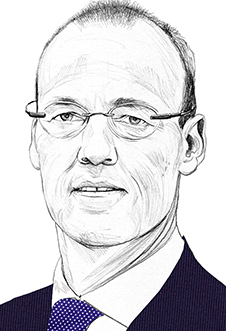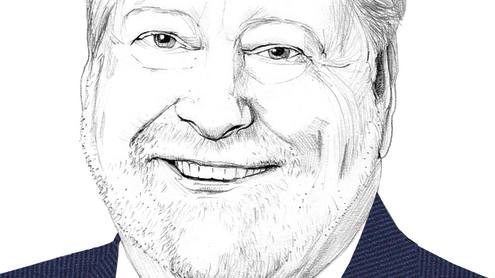More than a decade after the 2007-08 global financial crisis erupted, inflation in the euro area has still not reached the European Central Bank (ECB) aim of below, but close to, 2%. This is despite unprecedented conventional and unconventional monetary easing and five years of economic expansion. Moreover, market-based indicators of long-term inflation expectations in the euro area have fallen, fuelling concerns that the anchoring of inflation expectations may have weakened.
From a more long-term perspective, inflation dynamics in the euro area have changed in two key ways. First, inflation trended down towards levels of about 2% between the mid-1980s and the global financial crisis, and has since then trended further down to levels of about 1.4%. Second, inflation persistence declined gradually between the mid-1980s and the global financial crisis, and has since increased back to its long-term average. Both these stylised facts have been observed on a global scale, but they are particularly pronounced in the euro area.
Phillips curve
These developments have important implications for central banks’ ability to control inflation. This can be explained using a Phillips curve framework, which, broadly speaking, explains inflation in terms of three main elements.
The first is external shocks, which can in principle have a positive, negative or ambiguous effect on inflation. The second element is economic slack, whose impact on inflation is captured by the slope of the Phillips curve. The higher the impact of slack on inflation, the stronger the transmission of changes in aggregate demand to inflation; the lower the impact, the more persistent inflation will be.
The third element is inflation expectations. They can be forward looking, in which case inflation is self-equilibrating; or backward looking, in which case inflation is more persistent. The standard Phillips curve framework can be augmented with a trend, which captures factors that affect inflation over a longer horizon. Time series models that decompose inflation into a trend and a cycle provide evidence of such trends but are silent on their actual causes.
In the benign environment of the 'great moderation' between the mid-1990s and the early 2000s, slack had a strong and stable link with inflation, and shocks were temporary, rather than persistent, and not very large. A trend in inflation can be discerned that first declined in the early 1990s and then plateaued at levels of about 2% before the global financial crisis. Inflation expectations were seen as being mainly forward looking. In this environment, monetary authorities had no difficulties in keeping inflation expectations well anchored.
In the current environment, however, inflation is low and more persistent. In a Phillips curve framework, there are different explanations for this fact: more persistent negative shocks, a flatter slope of the Phillips curve, more backward-looking inflation expectations, or a downward trend in inflation. These explanations are hard to distinguish empirically and can be related.
Note that inflation is likely not characterised by a secular trend but rather by a time-varying trend, whose underlying drivers might fade out or reverse. For example, if the ongoing surge in protectionism becomes entrenched, the trend towards increasing globalisation that has arguably contributed to dampening inflation since the mid-1980s might actually be reversed, and inflation might start trending upwards again.
Undermining credibility
The changes in the characteristics of the Phillips curve since the global financial crisis imply that, despite a very accommodative monetary policy, inflation may remain below the central bank’s objective for a considerable amount of time. This could undermine monetary authorities’ credibility and the effectiveness of their policies.
To support credibility, central banks may therefore want to push the cyclical inflation component even harder, easing policy more aggressively in conventional and unconventional ways. But in doing that, a central bank such as the ECB would face another major challenge – eventually these policies will run into economic, institutional and legal restrictions.
Certain economic restrictions, such as the difficulties associated with lowering interest rates far into negative territory, have become more relevant as a consequence of a falling natural rate. The scope for central banks to fight recessions by lowering short-term policy rates has likely gotten structurally smaller. While non-standard monetary policy measures can be used to ease policy further when policy rates have reached their effective lower bound, these too will eventually run into economic restrictions, when increasing side-effects start to outweigh the diminishing marginal returns of further easing. These restrictions are not unique to the ECB, and they challenge Milton Friedman’s notion that inflation “is always and everywhere a monetary phenomenon”, at least when it comes to persistently low inflation.
EMU specific
Other institutional and legal restrictions are more specific to economic and monetary union (EMU). The ECB operates in an (as yet) not fully complete monetary union and faces a large number of heterogeneous fiscal counterparts. It is also bound by a treaty that explicitly prohibits it from engaging in monetary financing, the interpretation of which has been the subject of debate and even litigation.
The ECB, however, has stood up to the challenge. Supported by the strengthening of EMU and reduced legal ambiguity around its freedom to act, the ECB has substantially widened its toolkit – both in terms of instruments to ease the stance of monetary policy beyond the effective lower bound (ELB), and in terms of instruments to restore impairments in the monetary transmission mechanism.
This has contributed to a strong recovery of the euro area economy. From 2013 until 2018, growth steadily exceeded potential, closing the output gap in the process. Perhaps the most tangible gain has been the improvement of the labour market in recent years. Unemployment has dropped significantly and wage growth has picked up; yet the final step to consumer price inflation has thus far proven elusive.
With recent headwinds to growth dampening the inflation outlook, in September 2019 the ECB took further measures to support inflation. Nonetheless, even now that economic slack appears largely absorbed, economists and financial markets alike see low inflation remaining persistent and converging to the ECB’s inflation aim only sluggishly.
The quest for policy scope
The current situation facing the ECB is not one that was envisaged when the current monetary strategy was drawn up back in 1998, nor was it foreseen during the most recent evaluation in 2003. The environment in which the ECB operates and the EMU’s institutional architecture have evolved since. This supports efforts for a broad review of the ECB’s strategy.
As part of this review, the challenges outlined earlier warrant a discussion on the merits of increased flexibility in the face of external shocks. One way to implement this would be through a symmetric band around the inflation aim, which would buy the central bank time and flexibility in responding to forces it cannot control.
Increased flexibility could help the ECB to communicate its commitment to price stability in a more appropriate fashion, acknowledging its currently limited control over short-run inflation. It would also provide additional room for manoeuvre to prevent the build up of macroeconomic and financial imbalances, which – at the moment they collapse – might cause an even more severe ELB situation.
Of course, deviations of inflation from its aim pose communication challenges, and might cause a drift in inflation expectations. A clarification of the ECB’s inflation aim might help to prevent this, and so might a symmetric band around the aim. This would acknowledge that inflation will sometimes overshoot, while at other times it will undershoot.
More explicit forms of ‘make-up’ strategies have been put forward too, for example by former Federal Open Market Committee chair Ben Bernanke. These strategies explicitly aim at an inflation overshoot following a period of inflation below target. To the extent that such strategies bring us back to a very precise aim for average inflation, they might end up limiting the ECB’s flexibility, rather than enhancing it.
Fiscal stabilisation
Importantly, the ECB does not operate in a vacuum. Whichever way central bankers decide in designing a new monetary strategy, perhaps the most important precondition to preserve policy scope is that other policies also contribute to macroeconomic and financial stability. In the euro area, important steps in this regard have already been taken. The ECB’s scope to ease its monetary stance has benefited greatly from the improvements to EMU’s institutional architecture.
Yet it is a fact of life that the ECB still faces 19 different fiscal counterparts. This makes the purchase of government bonds more fraught than in other jurisdictions. The time-inconsistent application of the Stability and Growth Pact and the absence of a central fiscal capacity have also contributed to relatively procyclical fiscal policies. A simpler Stability and Growth Pact, with more emphasis on debt levels relative to budget deficits, might offer some relief.
To what extent this should be complemented by steps towards more fiscal risk sharing is very much a political question. From a central banker’s perspective, however, it is clear that more effective fiscal stabilisation would have the potential to make the ECB’s job significantly easier.
Klaas Knot is president of De Nederlandsche Bank. Text based on a speech given at the Suerf conference on 'Racing for economic leadership: EU and US perspectives', October 16, 2019, New York. The author would like to thank Gabriele Galati and Niels Gilbert for their contributions to this speech, but retains the sole responsibility for the opinions contained therein.







